
Do you find yourself struggling with the task of storing your dining room table? Whether you're downsizing, moving, or simply need to create some extra space, figuring out the best way to store a dining room table can be a challenge. In this guide, we will explore various options and strategies for storing your dining room table safely and efficiently. From disassembling and folding to using storage facilities, we've got you covered with practical tips and tricks that will make your storage journey hassle-free. So, let's dive in and discover the best way to store your dining room table!
| Characteristics | Values |
|---|---|
| Material | Wood, glass, metal |
| Size | Small, medium, large |
| Shape | Round, rectangular |
| Legs | 4 legs, pedestal |
| Foldable | Yes, No |
| Extensible | Yes, No |
| Storage | Yes, No |
| Finish | Natural, stained |
| Color | Various colors |
| Style | Modern, traditional |
| Weight | Lightweight, heavy |
| Assembly required | Yes, No |
What You'll Learn
- What are the best ways to protect a dining room table from damage when it is being stored?
- How should I clean and prepare my dining room table for storage?
- Are there any specific materials or covers that are recommended for wrapping a dining room table while in storage?
- Is it necessary to disassemble a dining room table before storing it, or can it be stored fully assembled?
- What is the best location or environment to store a dining room table to minimize the risk of damage?

What are the best ways to protect a dining room table from damage when it is being stored?
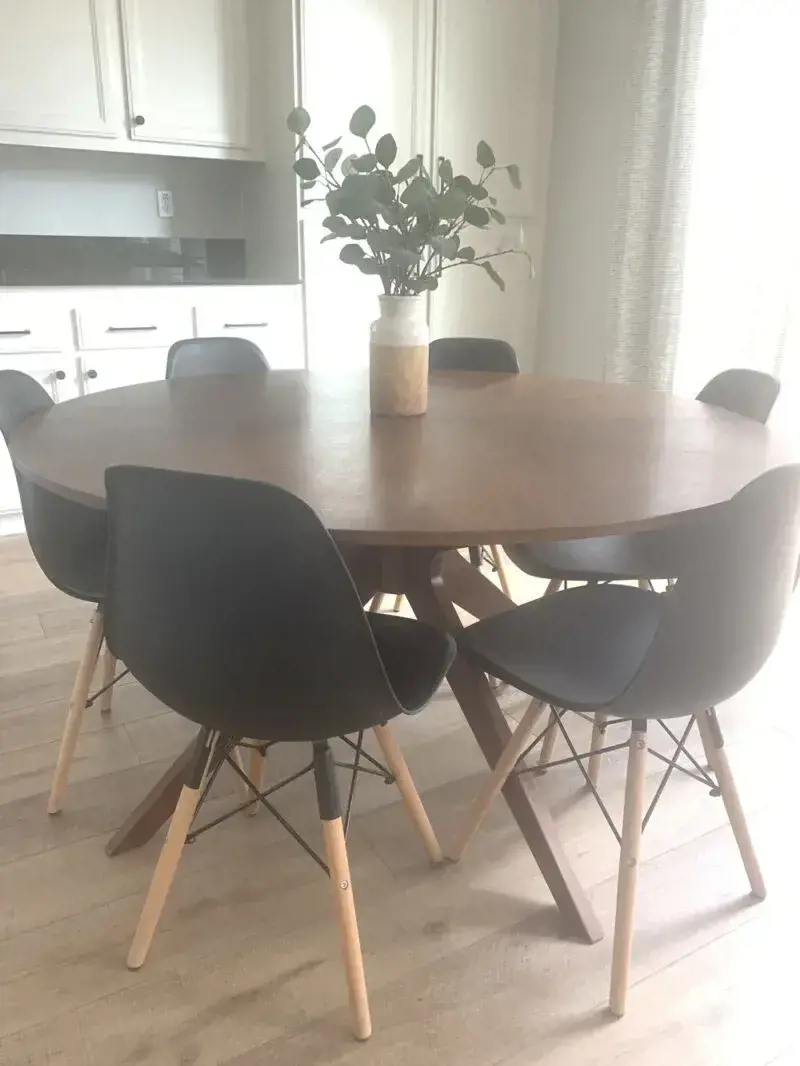
When it comes to storing a dining room table, it's important to take the necessary steps to protect it from damage. Whether you are moving and need to store your table temporarily or you simply have extra furniture that needs to be stored, there are several ways to ensure your dining room table remains in good condition. Here are some of the best ways to protect a dining room table when it is being stored:
- Clean and dry the table thoroughly: Before storing your dining room table, make sure it is clean and dry. Use a gentle cleaner and a soft cloth to remove any dirt or dust from the surface. This will help prevent any stains or damage that could occur during storage.
- Disassemble the table: If possible, disassemble the table before storing it. This will make it easier to transport and reduce the chance of damage. Remove the legs and any other removable parts, and wrap them separately to prevent scratching or breakage.
- Wrap the table in protective materials: Once the table is disassembled, wrap each piece in protective materials such as bubble wrap or moving blankets. This will provide an extra layer of cushioning and prevent any scratches or dents. Secure the protective materials with tape or plastic wrap to keep them in place.
- Use a table cover: If you don't want to disassemble the table, consider using a table cover. A table cover can help protect the surface of the table from dust, moisture, and other potential damage. Choose a cover that is made of a sturdy material and fits securely over the table.
- Store the table in a climate-controlled environment: It's important to store your dining room table in a climate-controlled environment to prevent any damage from extreme temperatures or humidity. This will help prevent warping, cracking, or other types of damage that can occur when wood is exposed to these conditions. If you don't have access to a climate-controlled storage facility, consider storing your table in a room in your home that remains relatively stable in temperature and humidity.
- Elevate the table off the ground: When storing your dining room table, it's a good idea to elevate it off the ground. This will help protect it from any moisture that may accumulate on the floor. You can use wooden blocks or pallets to lift the table off the ground and ensure proper ventilation.
- Avoid placing heavy items on top of the table: When storing your dining room table, be mindful of what you place on top of it. Avoid stacking heavy items or placing any objects that could potentially damage the surface. This will help prevent any dents or scratches that can occur when pressure is applied to the table.
By following these steps, you can ensure your dining room table remains in good condition when it is being stored. Remember to clean and dry the table, disassemble it if possible, wrap it in protective materials, use a table cover if needed, store it in a climate-controlled environment, elevate it off the ground, and avoid placing heavy items on top. With proper care and protection, your dining room table will be ready to use and enjoy when you are ready to bring it out of storage.
Can High Density Foam Enhance the Comfort of Your Dining Room Chairs?
You may want to see also

How should I clean and prepare my dining room table for storage?
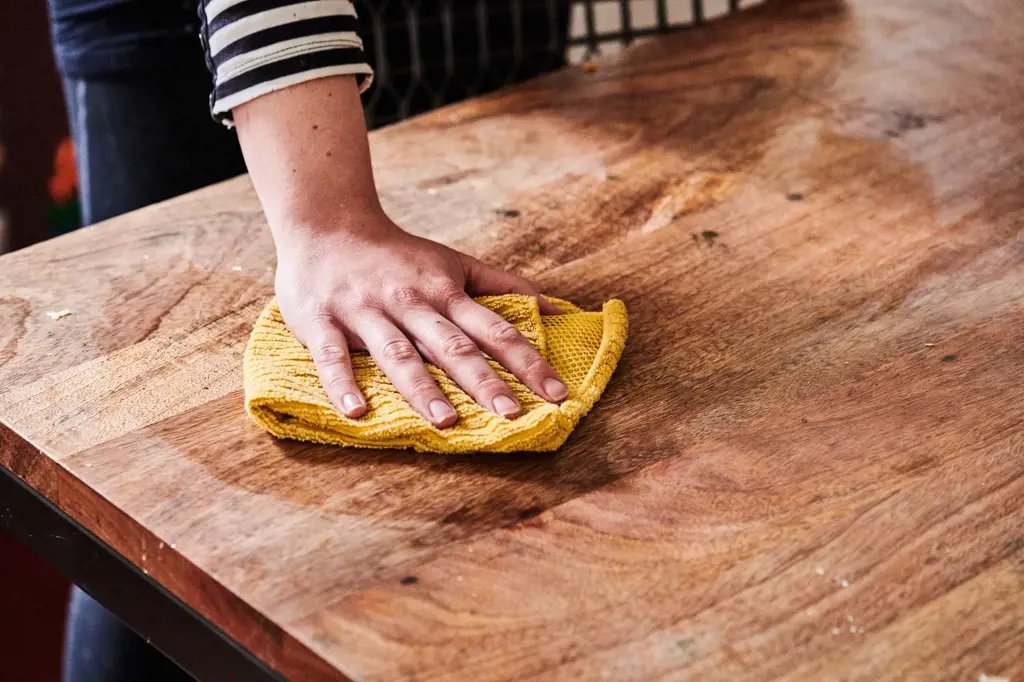
Dining room tables are a significant investment, and it's essential to take the necessary steps to clean and prepare them for storage properly. Whether you're moving, renovating, or simply need to free up some space, follow these steps to ensure your dining room table stays in excellent condition while in storage.
Step 1: Remove any debris or food particles
Before anything else, thoroughly clean your dining room table to remove any food particles, dust, or debris that may have accumulated over time. Use a soft brush or a cloth to gently brush away loose dirt. Pay close attention to the corners of the table and the crevices on its surface.
Step 2: Wipe down with a mild cleaner
After removing loose dirt, wipe down the table with a mild cleaner. Avoid using harsh chemicals or abrasive materials, as they can damage the table's finish. Instead, opt for a mixture of warm water and mild dish soap. Apply the solution using a soft cloth, and gently wipe the table in a circular motion. Rinse the cloth frequently to prevent re-applying dirt to the table.
Step 3: Dry thoroughly
Once the table is clean, dry it thoroughly to prevent any moisture from seeping into the wood and causing damage. Use a clean, lint-free cloth or towel to absorb any remaining moisture. Make sure to dry both the surface of the table and any carved or intricate areas.
Step 4: Apply a protective layer
To keep your dining room table in optimal condition during storage, consider applying a protective layer. This step is particularly important if you anticipate the table being stored for an extended period. There are various products available, such as table protectors, wax, or specialized wood sealants, that can help preserve the table's finish and prevent it from drying out.
Step 5: Disassemble if necessary
If your dining room table is too large or awkwardly shaped to fit through doorways or into storage areas, consider disassembling it. Check the manufacturer's instructions for guidance on how to safely disassemble your specific table. Take care when handling the table components to avoid any damage.
Step 6: Wrap and store properly
Once your dining room table is clean and protected, wrap it appropriately before storing. Use thick blankets, furniture pads, or bubble wrap to wrap each piece securely. This additional layer of protection will guard against scratches and dings during the storage period. If available, store the table components in a climate-controlled storage unit to minimize the risk of moisture damage or warping.
Step 7: Take precautions against pests
Pests, such as insects or rodents, can wreak havoc on stored furniture. To prevent infestation, elevate your dining room table off the floor by using pallets or wooden blocks. Additionally, consider using pest deterrents, such as mothballs or insect repellent, in the storage area to reduce the likelihood of pests damaging your table.
Remember, each table's specific care instructions may vary based on its material and finish. Always consult the manufacturer's guidelines, if available, for the best cleaning and storage practices. By following these steps and taking proper precautions, you can ensure that your dining room table remains in pristine condition throughout its time in storage.
Reserving a Private Dining Room for Your Event Made Easy
You may want to see also

Are there any specific materials or covers that are recommended for wrapping a dining room table while in storage?
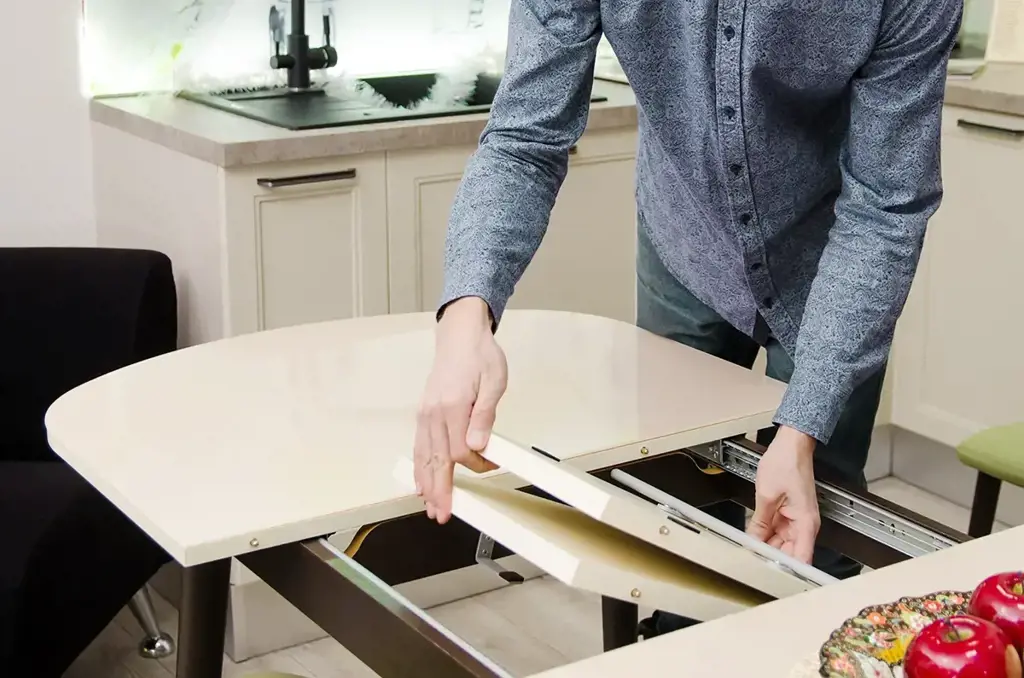
When it comes to storing a dining room table, it is important to protect it properly to ensure that it remains in good condition. Wrapping the table in a suitable material or cover can help prevent scratches, dents, and other damage. In this article, we will discuss some recommended materials and covers for wrapping a dining room table while in storage.
One popular material for wrapping furniture, including dining room tables, is moving blankets. These blankets are specifically designed to protect furniture during transportation and storage. They are made from a thick, durable fabric that provides cushioning and minimizes the risk of damage.
Another material that is commonly used for wrapping furniture is bubble wrap. Bubble wrap is made of plastic and features bubbles that provide cushioning and protection. It is an effective option for wrapping a dining room table, as it can help prevent scratches and dents caused by bumps and impacts.
In addition to these materials, you may also consider using furniture covers specifically designed for dining room tables. These covers are typically made from a heavy-duty fabric that offers protection against dust, moisture, and other elements. They often come with adjustable straps or ties to ensure a snug fit around the table.
When wrapping a dining room table for storage, it is important to follow a few steps to ensure proper protection. First, clean the table thoroughly to remove any dirt or debris. This will help prevent scratches and stains from forming during storage. Next, disassemble any removable parts, such as table legs or leaves, and wrap them separately. This will make it easier to store and transport the table.
Once the table is clean and disassembled, lay it on a flat surface and wrap it with the chosen material. If using moving blankets, make sure to cover the entire table, including the top, sides, and bottom. Secure the blankets in place with packing tape or bungee cords to prevent them from shifting during storage.
If wrapping the table with bubble wrap, start by wrapping it around the corners and edges to provide extra cushioning. Then, cover the top and sides of the table, securing the bubble wrap with tape.
If using a furniture cover, drape it over the table and adjust the straps or ties to ensure a tight fit. This will help protect the table from dust and moisture.
Finally, if storing the wrapped table in a storage unit or garage, consider placing a plastic sheet or tarp on the floor before placing the table on top. This will provide an additional layer of protection against moisture.
In conclusion, when wrapping a dining room table for storage, it is recommended to use materials such as moving blankets, bubble wrap, or furniture covers. Following proper steps, such as cleaning the table, disassembling removable parts, and securing the wrapping material in place, will help ensure that the table remains in good condition while in storage.
The Cost to Paint a Dining Room: A Complete Guide to Budgeting
You may want to see also

Is it necessary to disassemble a dining room table before storing it, or can it be stored fully assembled?
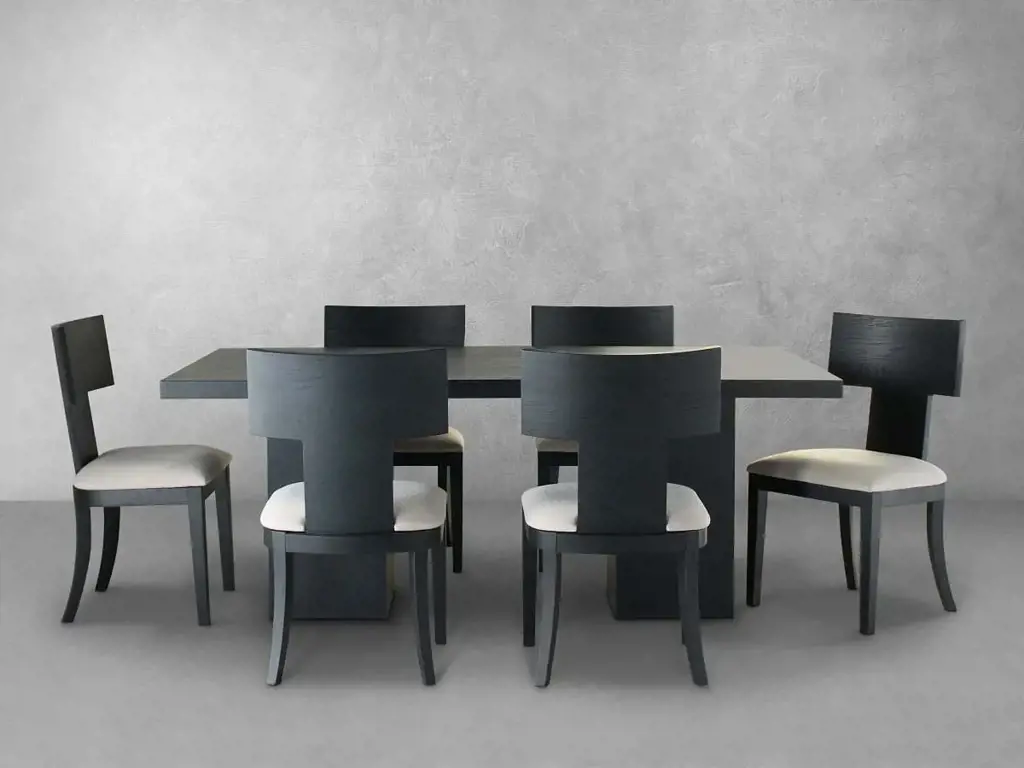
When it comes to storing a dining room table, many people are unsure whether they should disassemble it or store it fully assembled. The answer to this question depends on various factors, such as the size of the table, the available storage space, and the material of the table. In this article, we will discuss the pros and cons of both options to help you make an informed decision.
Disassembling a dining room table before storing it can have several advantages. Firstly, it allows for easier transportation and storage. By removing the legs and other detachable parts, you can significantly reduce the size of the table, making it more manageable to move and store. This can be particularly beneficial if you have limited storage space or need to transport the table to a different location.
Another advantage of disassembling a dining room table is that it helps prevent damage during storage. When a table is fully assembled, it is more susceptible to scratches, dents, and other types of damage. By disassembling the table, you can wrap and protect each component individually, reducing the risk of any mishaps during storage. Additionally, storing the table parts separately can prevent any undue strain on the legs or other supporting structures.
On the other hand, storing a dining room table fully assembled can have its own benefits. For one, it eliminates the need for reassembly when you want to use the table again. If you have the space to store the table as it is, keeping it fully assembled can save you time and effort in the future. It also ensures that the table remains in its intended form, without any risks of misalignment or structural issues that may arise during disassembly and reassembly.
The decision to disassemble or store a dining room table fully assembled also depends on the material of the table. For example, if your table is made of solid wood, disassembling it may be more beneficial. Wood can be susceptible to temperature and humidity changes, which could lead to warping or cracking if not stored properly. Disassembling the table and wrapping each component individually can provide better protection against these potential issues.
On the other hand, if your table is made of a more durable material like metal or glass, storing it fully assembled may be a viable option. These materials are less likely to be affected by temperature and humidity changes and can withstand the rigors of storage without much risk of damage.
In conclusion, whether you should disassemble a dining room table before storing it or store it fully assembled depends on various factors. Disassembling the table can make transportation and storage easier, protect it from damage, and allow for better protection of certain materials. However, storing the table fully assembled can save time and effort in the long run, particularly if you have sufficient storage space and a table made of durable material. Consider the size, available storage space, material, and your personal preference when making a decision.
Finding the Perfect Height for Hanging a Dining Room Sconce
You may want to see also

What is the best location or environment to store a dining room table to minimize the risk of damage?
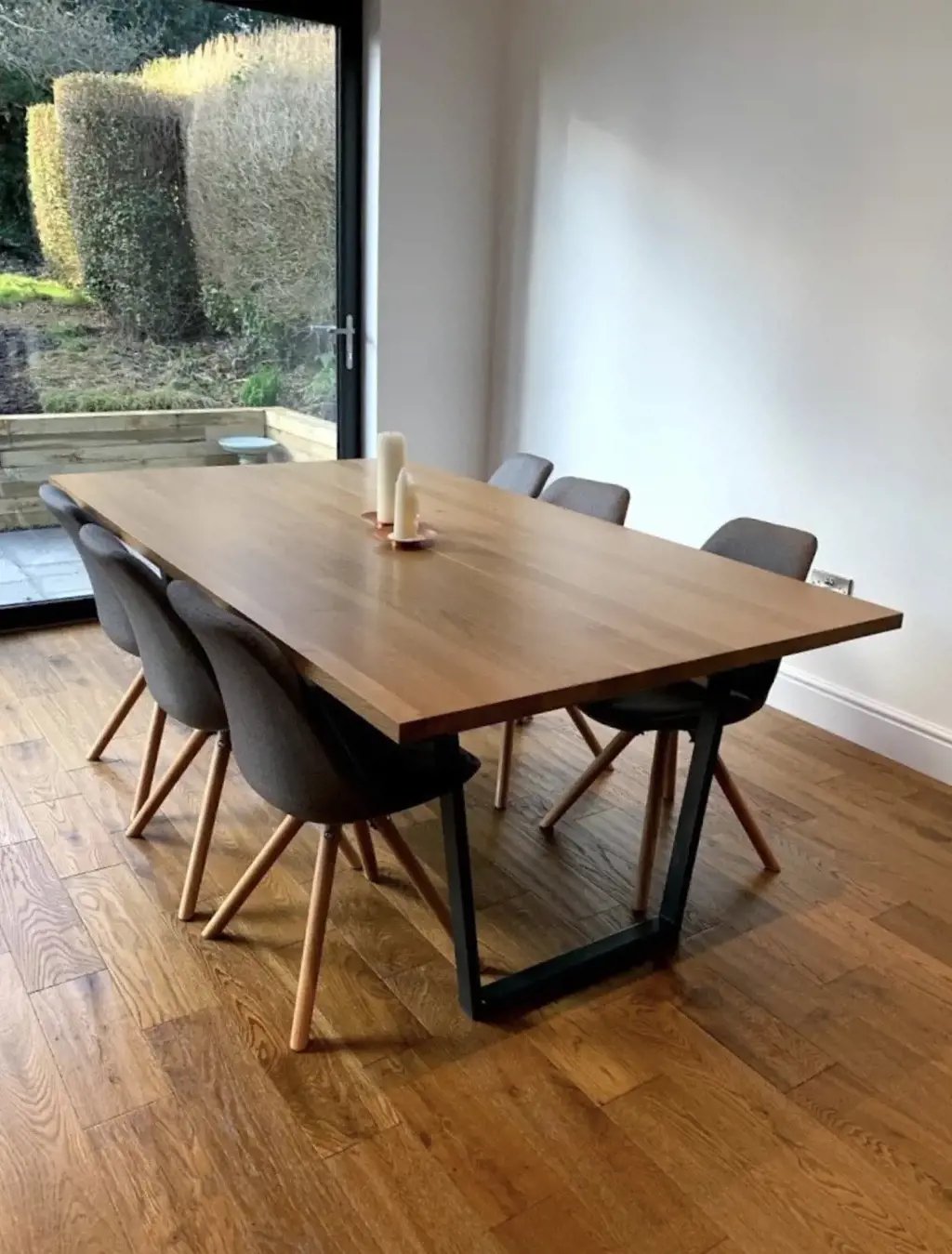
When it comes to storing a dining room table, it is important to consider the best location or environment to minimize the risk of damage. A dining room table is often a significant investment, and proper storage can help prolong its lifespan and keep it in good condition. Here are some key factors to consider when storing a dining room table.
Temperature and Humidity Control:
One of the most critical factors to consider when storing a dining room table is the temperature and humidity of the storage environment. Extreme temperatures and fluctuations in humidity can cause wood to expand, contract, or warp over time. It is best to store the table in a climate-controlled environment where the temperature remains relatively stable, ideally between 60 to 75 degrees Fahrenheit (15 to 24 degrees Celsius). The optimal humidity range for wooden furniture is around 40 to 45%. Consider using a dehumidifier or humidifier to control the moisture levels in the storage area.
Protection from Direct Sunlight:
Direct sunlight can fade and damage the finish of a dining room table, causing it to lose its original beauty. Therefore, it is crucial to store the table in an area where it is protected from direct sunlight. If the only available storage location has exposure to sunlight, consider using blinds, curtains, or UV-protective window film to minimize the UV rays' impact on the table.
Adequate Space:
Ensure that the storage environment provides enough space to accommodate the dining room table without any compression or strain. Avoid stacking other items on top of the table, as this can cause scratches or dents. If possible, disassemble the table to reduce its size and facilitate storage. Store any disassembled parts securely and label them accordingly for easier reassembly.
Protection from Moisture and Element:
Protect the dining room table from moisture and elements that can cause damage. Avoid storing the table in a damp or poorly ventilated space, such as a basement or attic. These areas are more prone to leaks, pests, and mold growth, which can affect the table's integrity. Consider using a furniture cover or wrapping the table in a plastic sheet to protect it from dust and moisture.
Consider Vertical Storage:
If space allows, consider storing the dining room table in a vertical position rather than horizontally. Storing the table vertically can help save space and reduce the risk of damage from heavy items or accidental bumps. Ensure that the table is adequately supported and secured to prevent it from falling or leaning.
Regular Inspection and Maintenance:
Even when stored in an optimal environment, it is advisable to regularly inspect and maintain the dining room table. Check for any signs of damage, such as cracks, loose joints, or insect infestation. Clean and dust the table periodically, using a gentle cleaner and a soft cloth. Avoid using harsh chemicals that may damage the table's finish.
In conclusion, the best location or environment to store a dining room table to minimize the risk of damage includes a climate-controlled area with stable temperature and humidity levels. Protect the table from direct sunlight, moisture, and elements. Provide enough space and consider vertical storage if possible. Regular inspection and maintenance are also essential to ensure the table's longevity and preserve its beauty. By following these guidelines, you can help keep your dining room table in excellent condition for years to come.
Measuring Dining Room Chairs for Fabric: A Step-by-Step Guide
You may want to see also
Frequently asked questions
If you don't have a lot of space, it can be helpful to disassemble the table. Remove the legs and any additional extensions or leaves, if applicable. Store the legs and other pieces separately in a safe and dry area. This will save space and make it easier to store the table in a compact manner.
To protect a dining room table while in storage, it's important to cover it with a protective material. Use a cotton or canvas drop cloth to cover the table and keep it free from dust, dirt, and scratches. Avoid using plastic covers, as they can trap moisture and potentially cause damage to the table.
While it is possible to store a dining room table in a garage or outdoor shed, it is not ideal. These areas are prone to fluctuations in temperature and humidity, which can cause warping or other damage to the table. If you must store the table in one of these locations, make sure it is properly covered and consider placing moisture-absorbing packets near the table to help control humidity levels.
Whether or not to disassemble your dining room table for storage depends on the specific table and the space available. If you have the option to disassemble the table and it will make storage easier or more convenient, it can be a good idea. However, for some tables, disassembly may not be necessary or practical. Consider the size and weight of the table, as well as the available storage space, when deciding whether to disassemble it.
Before storing your dining room table, it's important to clean it thoroughly. Use a gentle cleaner and a soft, non-abrasive cloth to remove any dirt or debris. Make sure the table is completely dry before covering it for storage to prevent the growth of mold or mildew. If the table has any delicate or decorative features, take extra care to clean and protect them.







